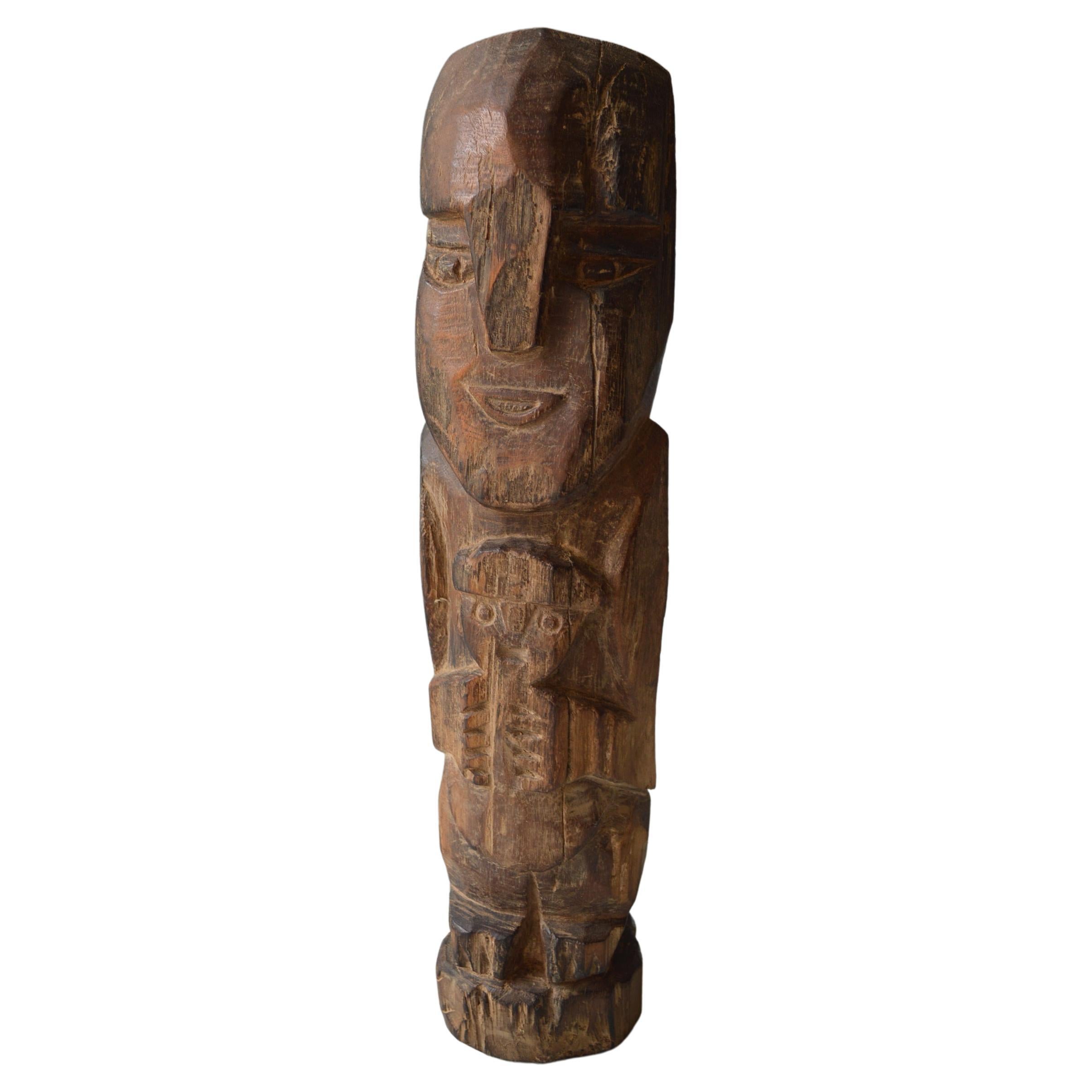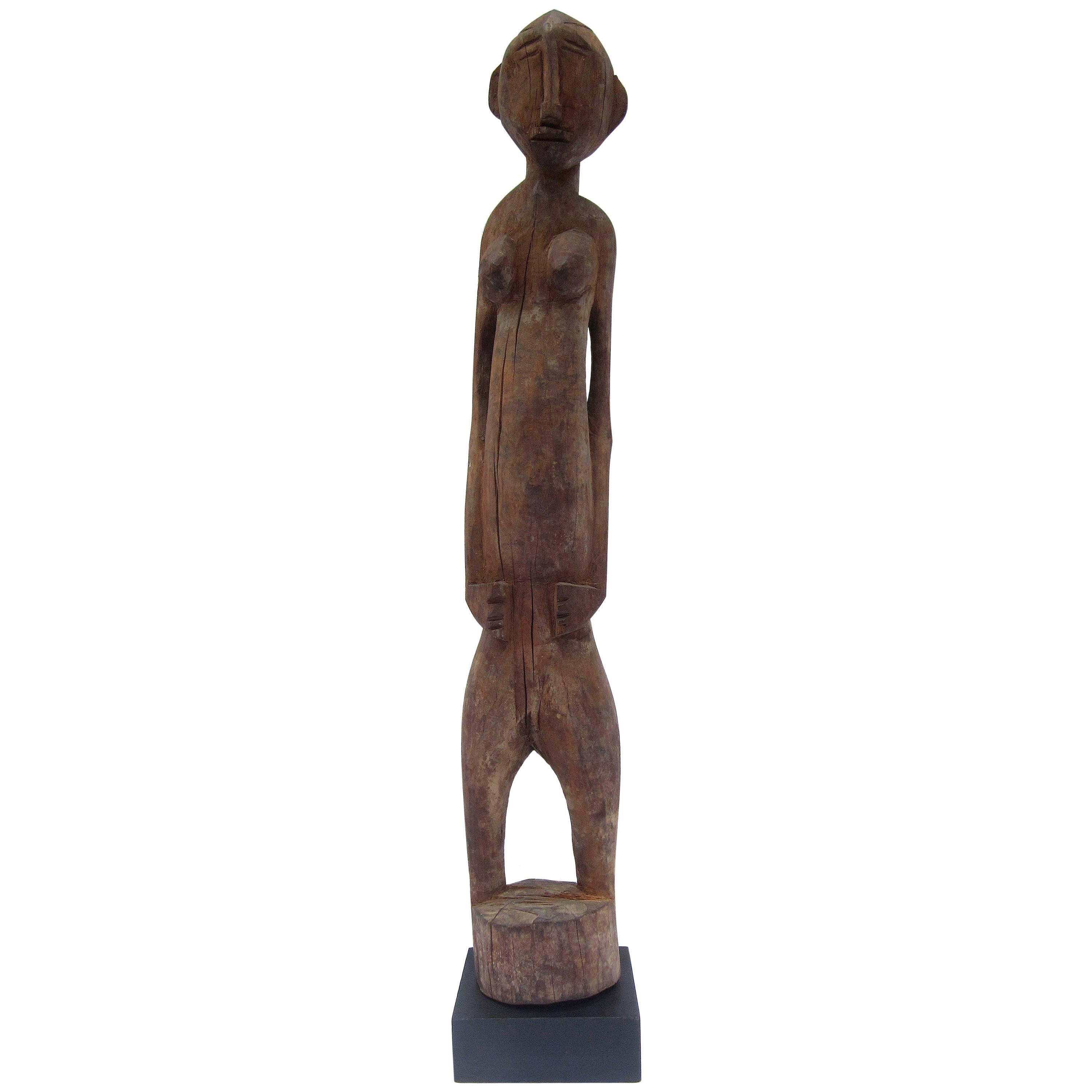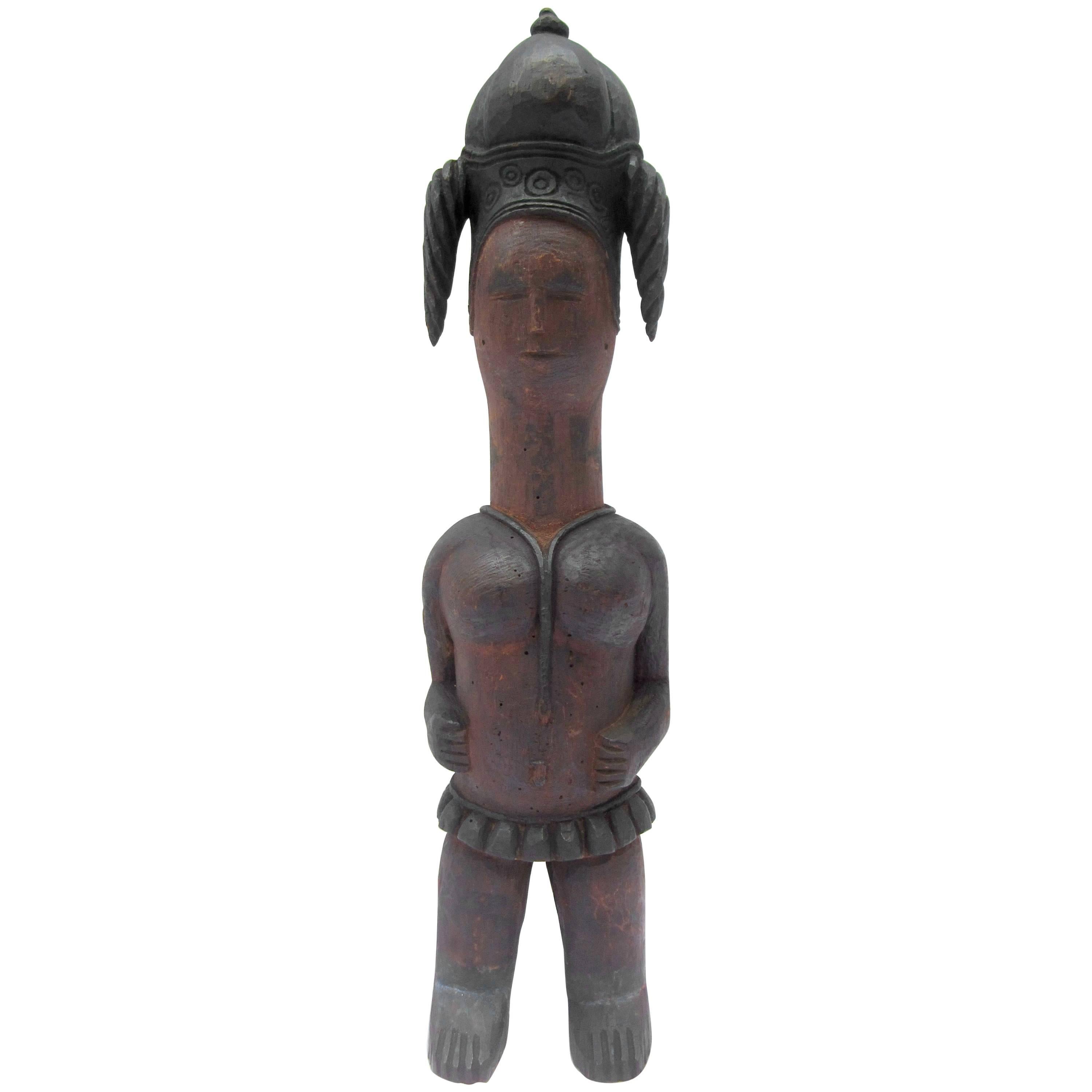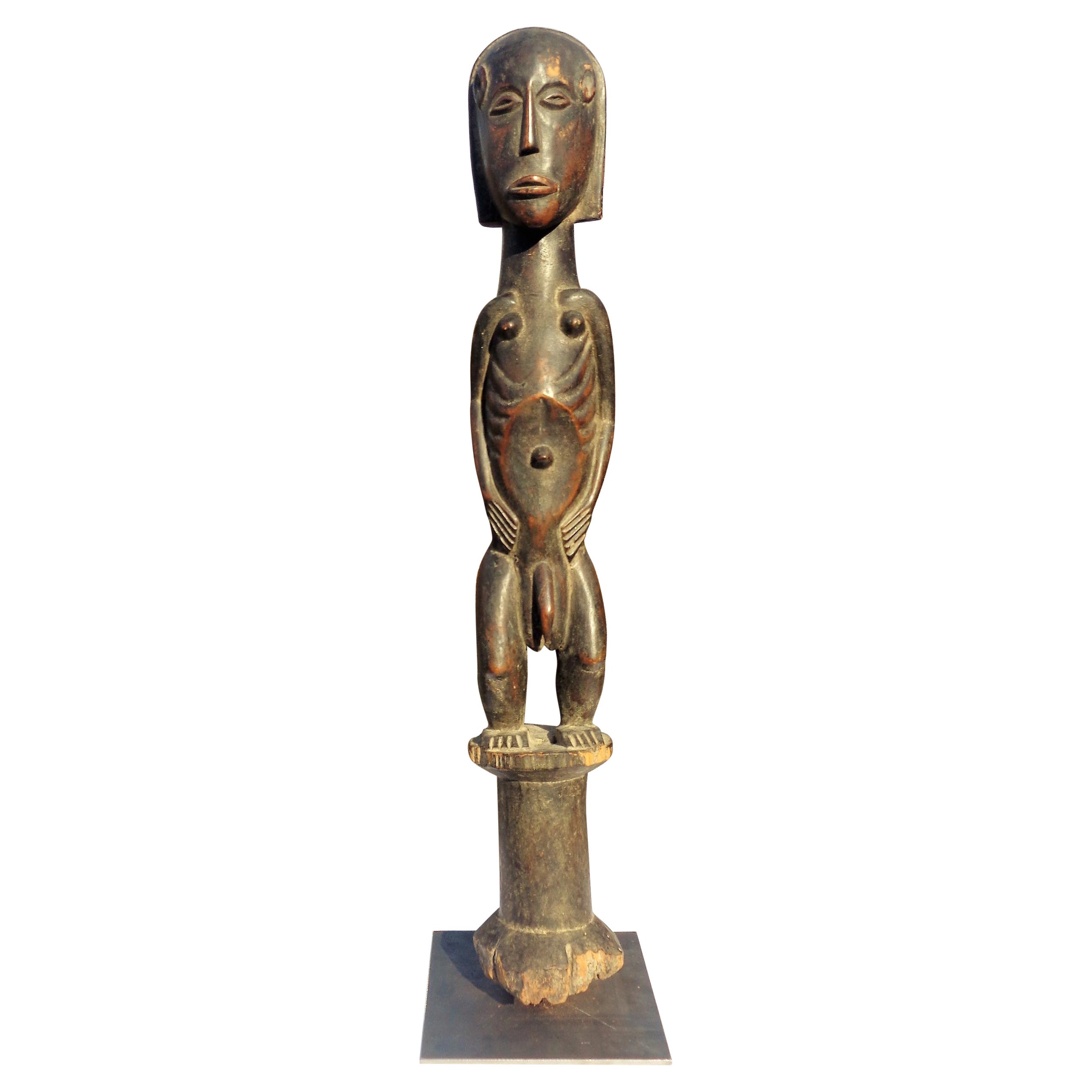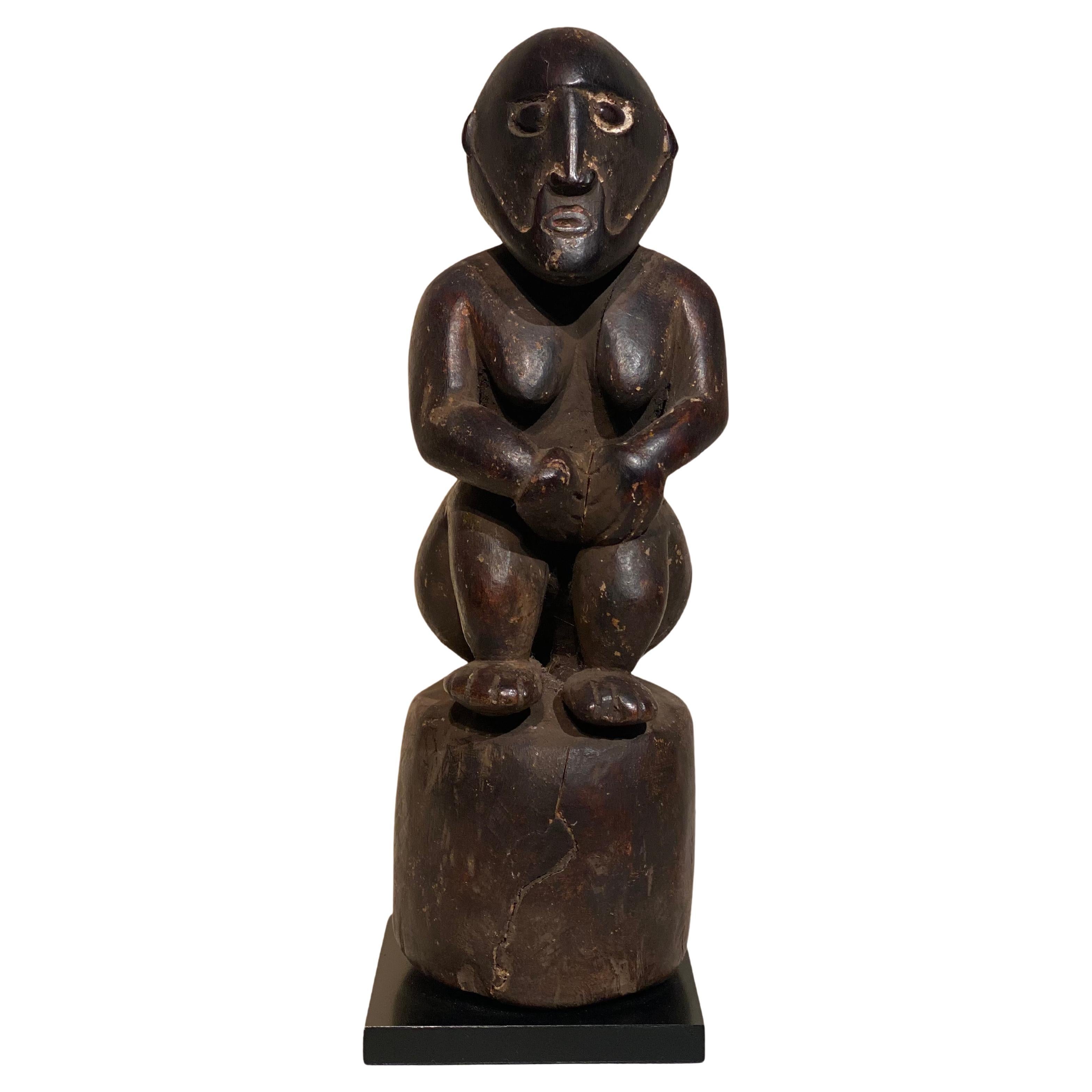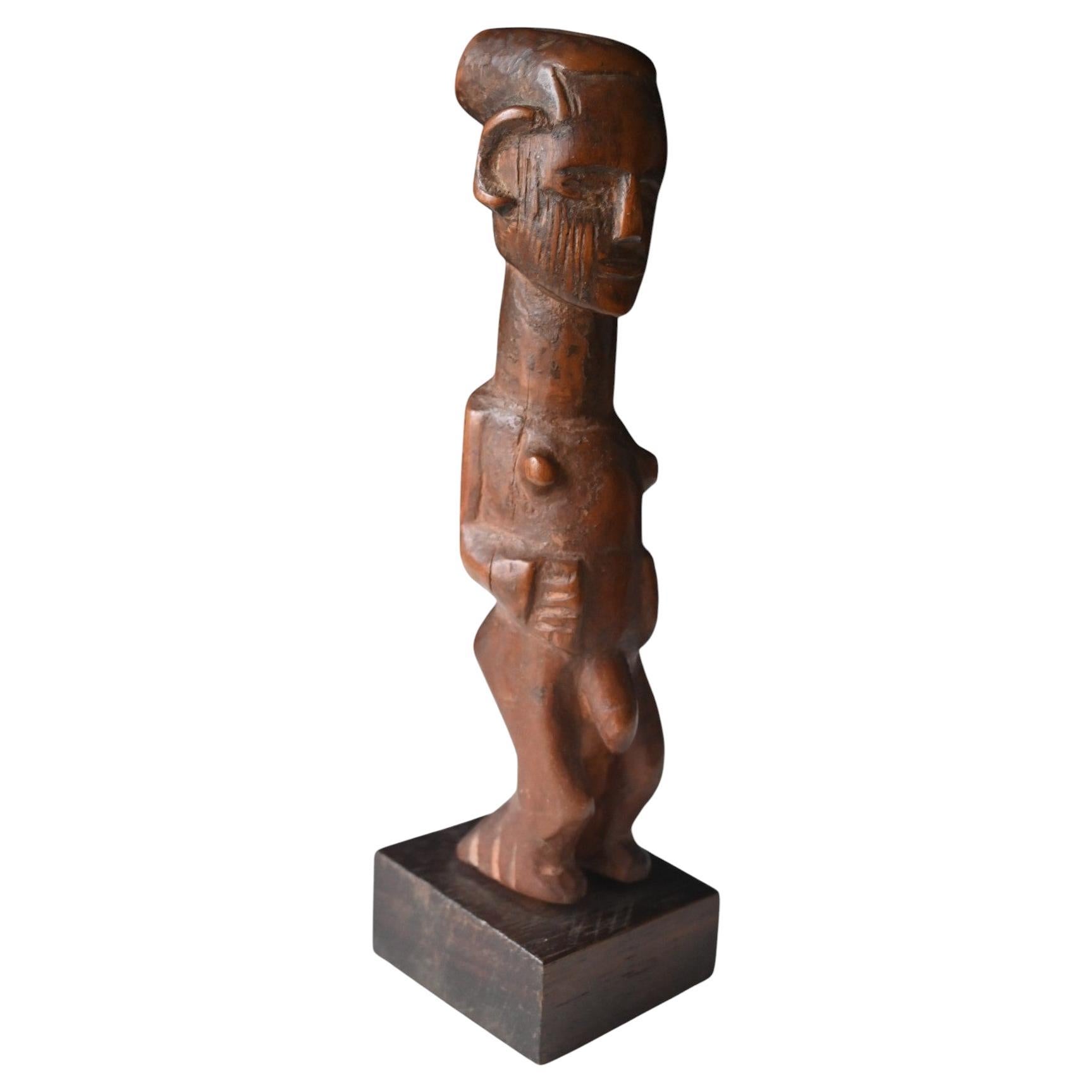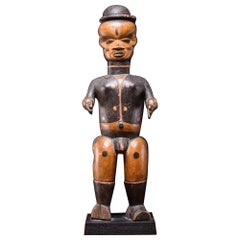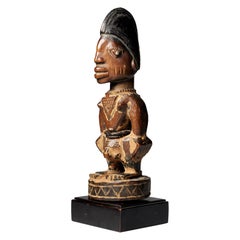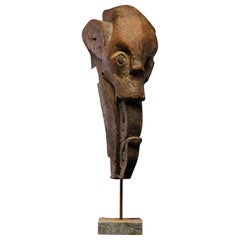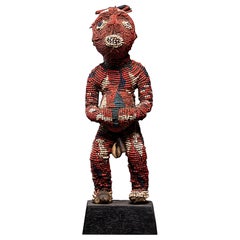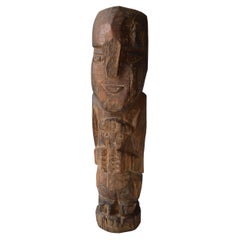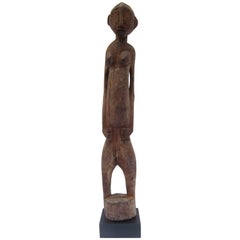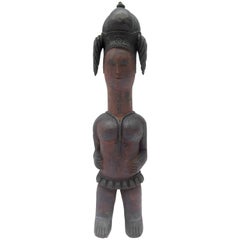Items Similar to Rare wooden Ceremonial Karaja doll with distinctive circles on the face, Brazil
Want more images or videos?
Request additional images or videos from the seller
1 of 10
Rare wooden Ceremonial Karaja doll with distinctive circles on the face, Brazil
$3,083.90
£2,299.19
€2,600
CA$4,235.27
A$4,740.11
CHF 2,475.08
MX$57,829.61
NOK 31,417.85
SEK 29,813.61
DKK 19,803.88
Shipping
Retrieving quote...The 1stDibs Promise:
Authenticity Guarantee,
Money-Back Guarantee,
24-Hour Cancellation
About the Item
The Karajá people inhabit a 180-mile-long region in central Brazil, spanning the states of Goiás, Mato Grosso, Pará, and Tocantins. Currently, they reside in 29 villages throughout the Araguaia River valley, near lakes and tributaries of the Araguaia and Javaés Rivers, as well as on the Ilha do Bananal.
In the early 20th century, the Karajá population was around 45,000. By 1999, it had declined to approximately 2,500–3,000, and today they number between 3,200 and 3,700, living across 20 different villages. The Karajá typically wear minimal clothing but adorn themselves with various ornaments. Men wear labrets in their lower lips and earplugs, while both men and women use body paint extensively and have a small circular tattoo on each cheek as a tribal mark.
The Karajá call themselves "Iny," meaning "us." The name "Karajá" is a Tupi term that loosely translates to "large monkey." Early records from the 16th and 17th centuries refer to them as "Caraiaúnas" or "Carajaúna." In 1888, Ehrenreich proposed the name "Carajahí," but in 1908, Krause standardized the spelling to "Karajá."
The Araguaia River serves as a mythic and social center for the Karajá, whose territory spans the river valley, including Ilha do Bananal, the world's largest river island, covering approximately two million hectares. Their villages are strategically situated near the lakes, tributaries, and higher inland areas of Ilha do Bananal. Each village defines specific territories for fishing, hunting, and ritual practices, with culturally designated spaces recognized by the entire group.
This connection to the Araguaia reflects the Karajá’s cultural mobility and tradition of exploring food resources along the river. Today, they continue the custom of camping with family in optimal locations for fishing and turtle-catching in lakes, tributaries, and river beaches. In the past, they built temporary villages in these areas for festivals during the dry season, when the Araguaia’s water level dropped. With the rainy season, they relocated to permanent villages on higher ground, away from rising water levels; some of these locations still serve as sites for farming, dwelling, and communal ceremonies.
Historical records reveal that the Karajá once engaged in conflicts with other indigenous groups, such as the Kayapó, Tapirapé, Xavante, Xerente, Avá-Canoeiro, and occasionally the Bororo and Apinayé, to defend their territory. These interactions led to an exchange of cultural practices between the Karajá, Tapirapé, and Xikrin (Kayapó).
A second wave of external contact began with the São Paulo bandeirantes (explorers) who journeyed to the mid-west and north of Brazil, like the Antônio Pires de Campos expedition from 1718 to 1746. Subsequent expeditions increased the Karajá’s exposure to Brazilian society. Despite this, the Karajá have maintained a strong resistance to cultural assimilation, preserving key cultural practices that support their sociocultural organization and indigenous identity.
- Dimensions:Height: 10.24 in (26 cm)Width: 1.97 in (5 cm)Depth: 1.58 in (4 cm)
- Materials and Techniques:
- Place of Origin:
- Period:
- Date of Manufacture:-
- Condition:Wear consistent with age and use.
- Seller Location:Leuven , BE
- Reference Number:Seller: 60271stDibs: LU3301144451592
About the Seller
5.0
Vetted Professional Seller
Every seller passes strict standards for authenticity and reliability
Established in 2017
1stDibs seller since 2017
171 sales on 1stDibs
Typical response time: 7 hours
- ShippingRetrieving quote...Shipping from: Leuven , Belgium
- Return Policy
Authenticity Guarantee
In the unlikely event there’s an issue with an item’s authenticity, contact us within 1 year for a full refund. DetailsMoney-Back Guarantee
If your item is not as described, is damaged in transit, or does not arrive, contact us within 7 days for a full refund. Details24-Hour Cancellation
You have a 24-hour grace period in which to reconsider your purchase, with no questions asked.Vetted Professional Sellers
Our world-class sellers must adhere to strict standards for service and quality, maintaining the integrity of our listings.Price-Match Guarantee
If you find that a seller listed the same item for a lower price elsewhere, we’ll match it.Trusted Global Delivery
Our best-in-class carrier network provides specialized shipping options worldwide, including custom delivery.More From This Seller
View AllIbibio Anthropomorphic Standing Male Janus Figure, Nigeria
Located in Leuven , BE
This elaborate Janus statue is a rare example of an Ibibio free-standing figure to recall a well-defined ancestor in what seems a European outfit .The Ibibios lend supernatural power...
Category
20th Century Congolese Tribal Art
Materials
Wood
Carved Twin figure Ibeji Yoruba People, Nigeria
Located in Leuven , BE
A finely carved significant Yoruba Male Ibeji figure with a tall headdress, expressive eyes, original bead belt and heavy wear and polish from native use. Areas of encrusted camwood ...
Category
20th Century Nigerian Tribal Art
Materials
Wood
Architectural hardwood Ornament (Singa) from the Toba Batak people, Sumatra.
Located in Leuven , BE
The central image in Toba Batak art is the singa, a supernatural creature whose likeness protects individuals, homes, and communities from malevolent supernatural forces. The name singa derives from the Sanskrit word meaning lion. However, the Toba Batak singa...
Category
Antique Late 19th Century Indonesian Folk Art Sculptures and Carvings
Materials
Hardwood
Bamum Decorative Wooden Ancestor Figure Embroidered with European Glass Beads
Located in Leuven , BE
Bamum Decorative Wooden Ancestor Figure embroidered with European Glass Beads, Grasslands People , Cameroon
Private collection Brussels
These commemorative statuettes ,representing a...
Category
Mid-20th Century Cameroonian Figurative Sculptures
Materials
Wood, Beads
Ethnodesign Katoyo Mask representing the "Foreigner" with headdress from Angola.
Located in Leuven , BE
This unusual Chokwe mask is probably Katoyo, representing non-Chokwe individuals. The deviation of the mask from the more common Chokwe masks is mainly because they represent Portugu...
Category
Early 20th Century Angolan Figurative Sculptures
Materials
Wood, Fabric
Mother and Child , Cameroon, Mabea, 1920-1930, Provenance R. Caillois-P.Ratton
Located in Leuven , BE
Standing Fang Mabea Maternity of Museum quality, holding a pestle with both her hands. The mother's head is slightly turned to the left, while the child, which she carries on her bac...
Category
Vintage 1920s Cameroonian Figurative Sculptures
Materials
Leather, Wood
You May Also Like
Pre Columbian Rare Lambayeque Wood Figure
Located in London, GB
Pre columbian Lamabayeque wood figure Peru Circa 750 to 1375 AD
A rare standing figure of a deity with triangular tear drop shaped eyes holding a child,
Carved in very dense heavy hard wood
Measures: Height 14 inches, 36 cm weight, 1.5 kg approx
Ex collection of a Oxford Academic, reputed to have came from Pit rivers...
Category
Antique 15th Century and Earlier Peruvian Antiquities
Materials
Wood
Tribal Wood Carved Statue
Located in East Hampton, NY
Tribal wood carved statue. Unknown origin.
Category
20th Century Figurative Sculptures
Materials
Wood
Tribal Wood Carved Statue
Located in East Hampton, NY
Tribal wood carved statue... Unknown origin...
Category
Early 20th Century Figurative Sculptures
Materials
Wood
Oceanic Islands Carved Wood Male Figure
Located in Rochester, NY
Oceanic islands carved hardwood standing male figure w/ finely detailed anatomical features and beautifully aged surface color wear patina. Selling w/ a custom iron stand as shown ...
Category
20th Century Unknown Tribal Figurative Sculptures
Materials
Iron
Tribal Wooden Statue From Papua New Guinea
Located in Schellebelle, BE
An beautiful Wooden Statue from Papua New Guinea from the Sepik Region,
a seating figure with the typical Sepik features,
good patina and shine of the wood, powerful object
Category
Vintage 1970s Asian Tribal Art
Materials
Wood
Genuine carved wooden statuefrom the Teke tribe, DR Congo, early 1900
Located in Bilzen, BE
A genuine carved wooden statue from the Teke (Bateke) tribe DR Congo
Early 1900
Rich tribal used aged patina
mounted on a wooden base
Total heigth 18.5 cm, heigth figure 16.3 cm, ba...
Category
Early 20th Century Tribal Tribal Art
Materials
Wood
More Ways To Browse
Rare Brazilian Furniture
Used Furniture Long Beach
Doll Face
Used Furniture Key West
Antique Mens Clothing
Antique Camp Furniture
Carved Wood Doll
Used Tattoo Furniture
Rare Antique Dolls
Carved Wooden Dolls
Antique Doll Bodys
16th Century Wooden Sculpture
Antique Tattoo
Large Turtle Sculpture
Wooden Monkey Sculpture
Large Monkey Sculpture
Monkey Ornament
17th Century Monkey
